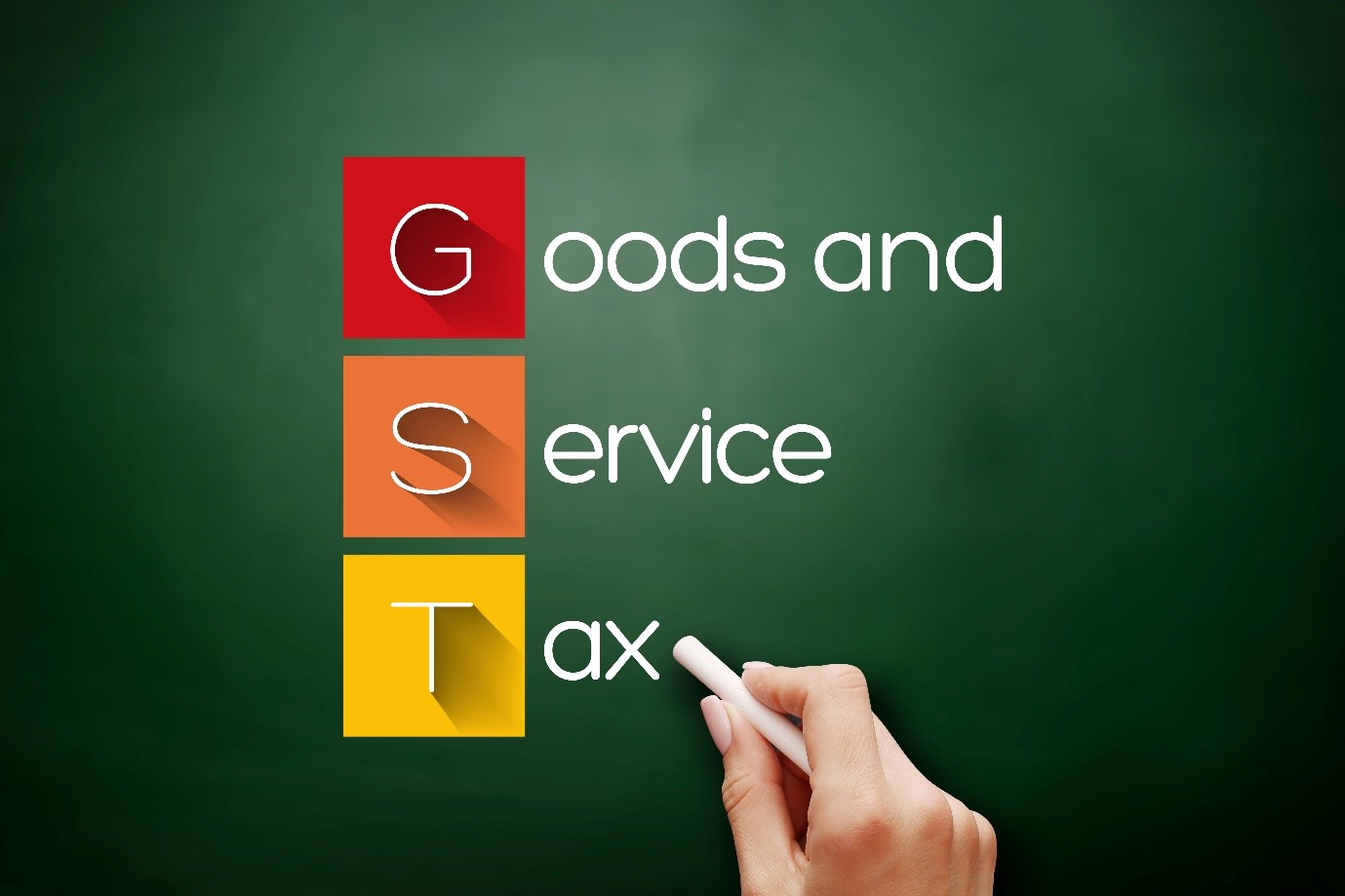Written by
Updated :
Reviewed by
In India, Goods and Services Tax (GST) is not just applicable to finished products but also to raw materials and services purchased by manufacturers/suppliers engaged in providing the finished goods to the customer. What’s more, the finished goods are also subject to GST at the applicable rate when the supply to the end user occurs. This creates the possibility of double taxation leading to inflated prices for the end user. One way in which the GST regime reduces the possibility of such double taxation is through the implementation of input tax credit.
Read on to know how the definition of input tax credit (ITC) is, who is eligible to claim ITC, documents required to claim and procedure to claim input tax credit.
What is Input Tax Credit?
In GST, Input Tax Credit (ITC) can be defined as a type of tax credit that is available to GST-registered entities who have paid taxes on the goods and services purchased by them as inputs for the business. This tax credit can subsequently be deducted from the GST applicable to the final supply made to the end user so that the overall GST liability of the registered GST entity decreases. So, the formula to calculate Net GST liability will look like:
Net GST Liability = Total GST Liability at time of supply – Input Tax Credit
To understand how the input tax credit works better, let’s consider a simple example. Suppose Supplier B purchases raw material from Supplier A and pays Rs. 500 as GST on the purchase. Subsequently, Supplier B uses the raw materials purchased from Supplier A to provide finished goods to Customer C which have total GST amount of Rs. 1000. Now, while Supplier B is required to pay tax authorities Rs. 1000 as GST on the sale, a GST payment of Rs. 500 has already been made as part of the process of purchasing inputs. This Rs. 500 is considered as input tax credit and is deducted from the GST payable at the time of supply to the customer. So, net GST to be paid by Supplier B to tax authorities will be Rs. 500.
Objective of Input Tax Credit Mechanism
As described earlier, the Input Tax Credit mechanism reduces the net GST payable by an GST registered entity at the time of supply to its customer. Thus, the primary objective of the input tax credit mechanism is to reduce the tax burden on a single GST registered entity and reduce the possibility of double taxation. Instead, it ensures that different entities involved in the supply of goods and services pay GST at applicable rates to ensure distribution of the overall GST burden. This reduction in tax burden can also help in improving overall GST tax compliance.
Eligibility Criteria for Availing Input Tax Credit in GST
The key eligibility criteria that needs to be fulfilled before an entity or individual can avail the benefit of the ITC mechanism include the following:
1. The entity seeking GST benefit must be registered under GST
2. The GST amount paid must be shown by the invoice provided by the registered supplier
3. The receipt of goods and/or services must be completed (including last shipment in the case of multiple shipment)
4. The GST registered supplier needs to have submitted the due GST to tax authorities and filed the applicable tax returns
5. If ITC has not already been included cost of capital goods and no depreciation on such tax has been claimed
6. The maximum time to claim input tax credit under GST has not passed

Investment Articles
- Benefits of ULIP Investment Plan
- Types of ULIPs
- How to Save Tax with ULIPs
- Maximize Returns With ULIPs
- Best Short Term Investments for Tax Saving
- What is Power of Compounding
- What is Investment
- Types of Investment in India
- 80C Investment Options
- Fixed Deposit Interest Rates
- Voluntary Provident Fund
- Difference Between Saving And Investing
- What is Fixed Deposit
- What is Term Deposit
- What is Recurring Deposit
- Fixed Deposit vs Recurring Deposit
- What is KYC
- Max Life Guranteed Income Plan
- What is ULIP
What is The Maximum Time Limit to Avail Input Tax Credit?
The time limit for availing input tax credit under GST is specified in Section 16(4) of the CGST Act, 2017. The earlier time limit was amended with effect from 1st October 2022. Subsequent to the amendment, the maximum time limit for claiming ITC under GST rules is the earlier of the following:
a) The 30th of November following the end of the applicable financial year or
b) Date of filing annual GST returns using Form GSTR 9
So for the previous Financial Year ending 31st March 2023, input tax credit must be claimed on or before 30th November 2023 or date of filing GSTR 9 Form (due by 31st December 2023).
Documents Required for Availing Input Tax Credit
Below are some of the key documents that a GST-registered entity needs to provide in order to avail the benefit of input tax credit:
Valid invoices issued by suppliers
Valid ITC entry must be visible in GSTR-2B submitted of buyer/recipient
Bill of entry
Valid bill of supply issued by the supplier as per applicable GST invoice rules
Invoice/Credit Note issued by Input Service Distributor as per GST invoice rules
The above list of documents is for illustrative purposes only and there may be other documents that can be used for the purpose of availing input tax credit on a case by case basis. The applicable document(s) need to be submitted at the time of filing GSTR-2 in order to avail the benefit of ITC under GST.
Examples of When Input Tax Credit Claims
While there are many different instances where input tax credit (ITC) can be claimed under the current Goods and Services Tax (GST) regime, some of the common instances of there include the following:
Input Tax Credit for Capital Goods
A GST-registered entity can claim input tax credit for capital goods purchased from a registered supplier(s) provided it is for business purposes. Examples of such capital goods include (but is not limited to) key business inputs like machinery, equipment, and office furniture used for your business operations.
Input Tax Credit for Raw Materials
GST-registered entities are also eligible to claim ITC for raw materials used in any production processes or services which it might provide. This includes items such as chemicals, metals, or wood, as well as any other components used to manufacture your products or render services. For example, if you purchase raw materials with a 5% GST rate, you then can claim the GST so paid as input tax credit.
Input Tax Credit for Input Services
GST-registered entities can also claim ITC on GST paid for availing services that are utilized for business purposes. Examples of such services that are eligible for input tax credit include GST paid for transport and logistics services, telecommunication services as well as banking and insurance services.
When is Input Tax Credit Not Allowed?
There are some situations where even after payment of GST, input tax credit can be claimed. A few expenses where ITC is not allowed include:
Membership fees for health club/fitness centre
Travel expenses of employee during period of leave
Goods and services utilized for construction of immovable property for personal or business use
Any goods/services exclusively for personal use
Standalone restaurants charging 5% GST on food but are not allowed to claim ITC on inputs
Expenses related to CSR (corporate social responsibility) initiatives
Purchase of goods and services for business purposes made by an entity registered under the GST composition scheme
The above list is illustrative and there can be many additional instances where claiming input tax credit is not allowed. The complete list items ineligible for ITC can be found in Section 17(5) of the CGST Act, 2017.
Frequently Asked Questions FAQs
Q. Can I claim input tax credit without GST registration?
A. No. Only GST-registered entities can claim ITC as per current GST rules.
Q. Can restaurants claim ITC under GST?
A. Restaurants that charge GST at the 5% cannot get ITC benefit under GST in India. However, a restaurant that charges 18% GST can claim input tax credit as per current rules of GST.
Q. Can GST composition scheme registered entities claim input tax credit?
A. No. GST composition scheme registered entities cannot claim ITC benefits irrespective of their industry or area of operations.
Q. Is input tax credit withdrawable in cash?
A. In most cases, ITC withdrawal in cash is not permitted and the amount gets credited to the e-ledger of the GST-registered entity which can be used to offset outward GST payments at a later date. However, there are some conditions where one may be eligible for a GST refund that can be transferred to the bank account of the GST-registered entity.
Q. In case of multiple shipments of goods or services, when can I claim input tax credit?
A. If multiple shipments of goods or services have occurred over a specific time period, ITC benefit can be claimed after the last shipment has been delivered and the payment has been made for the same.
Sources:
https://gsthero.com/input-tax-credit-itc-under-gst-with-examples/
https://www.gktoday.in/question/what-is-the-objective-of-input-tax-credit-mechanis
https://financepost.in/time-limit-to-avail-the-itc/
https://cleartax.in/s/document-and-forms-for-claiming-itc-under-gst
https://tallysolutions.com/gst/gst-input-tax-credit/#gref
https://idtc-icai.s3.ap-southeast-1.amazonaws.com/download/pdf21/Practical-FAQs-on-ITC-15july.pdf
ARN No:June23/Bg/15C


